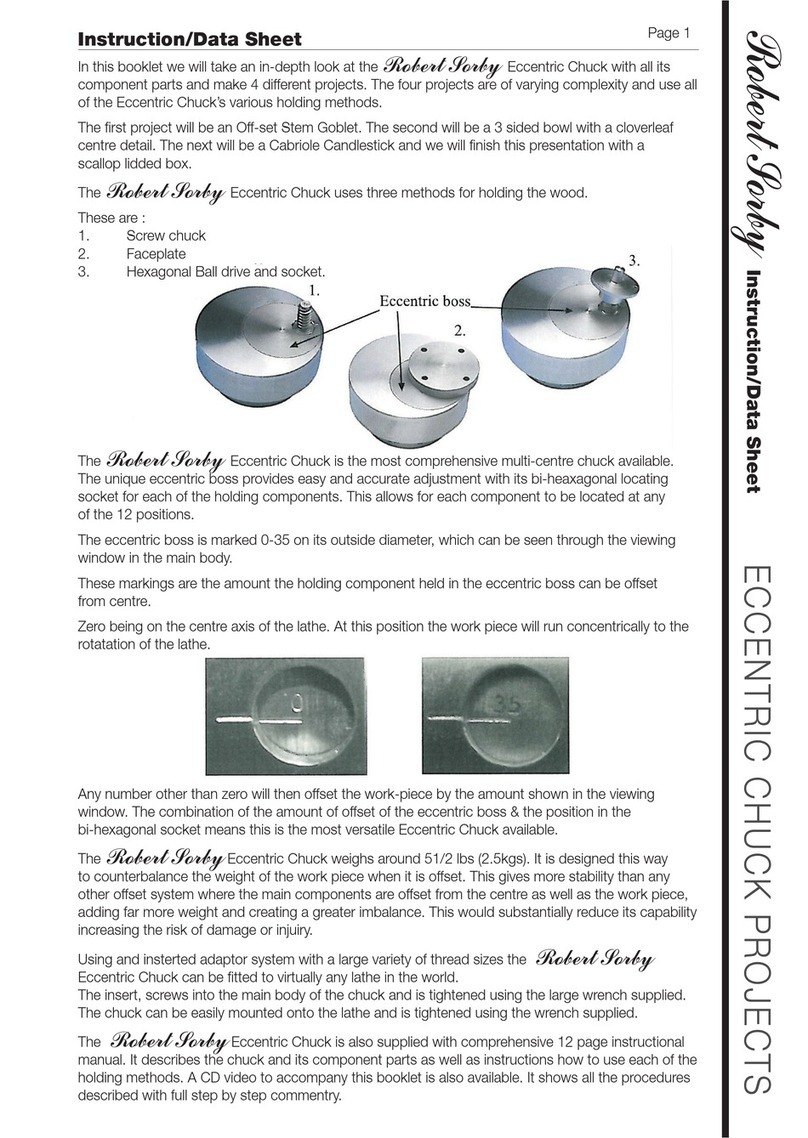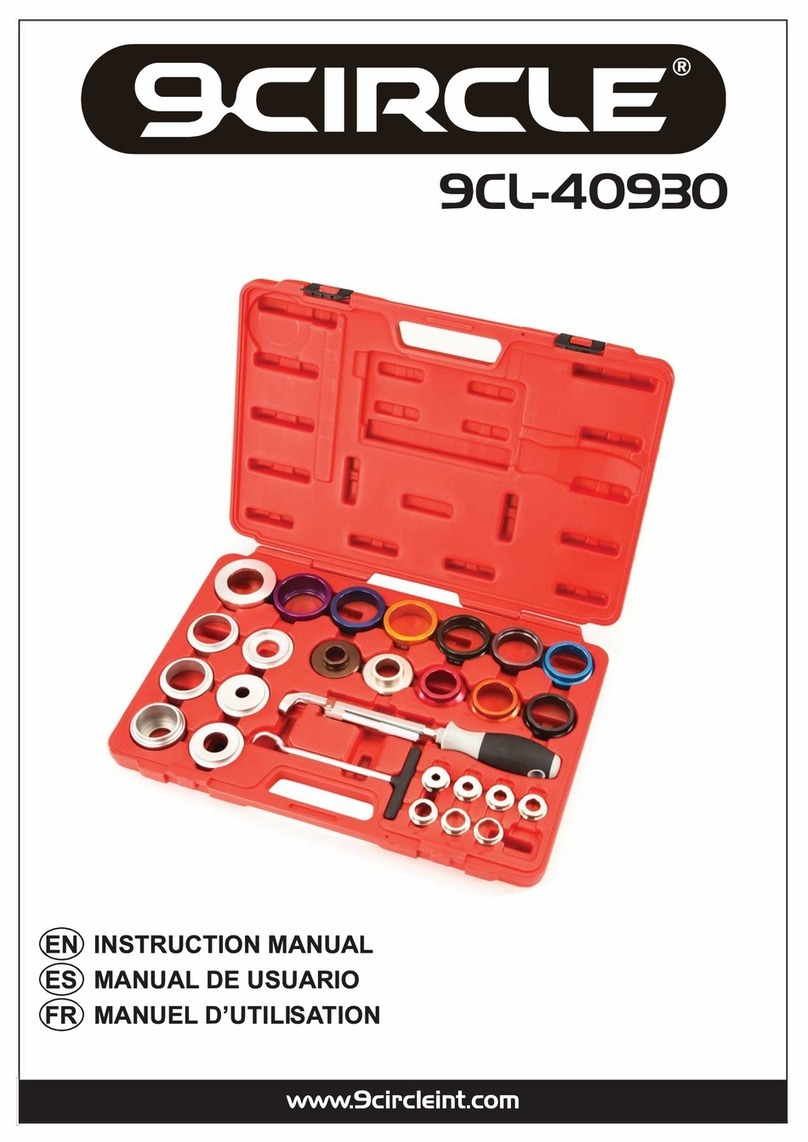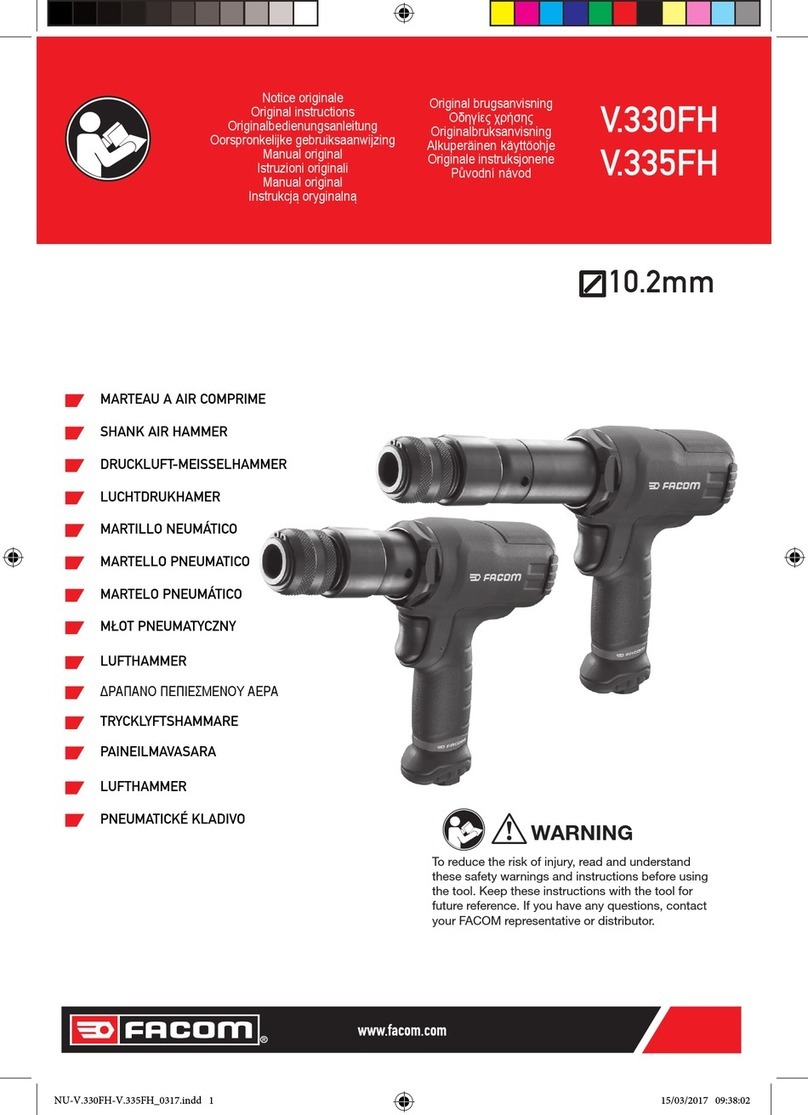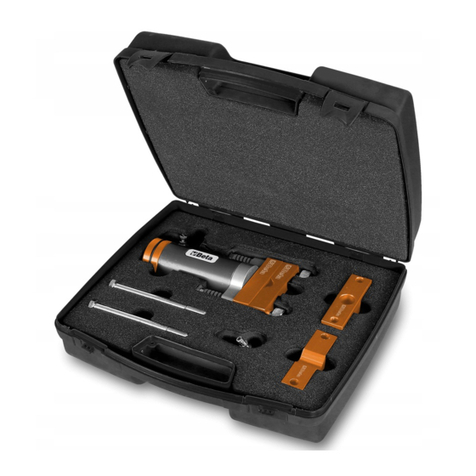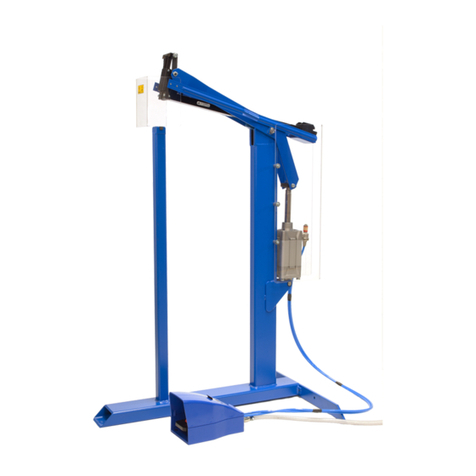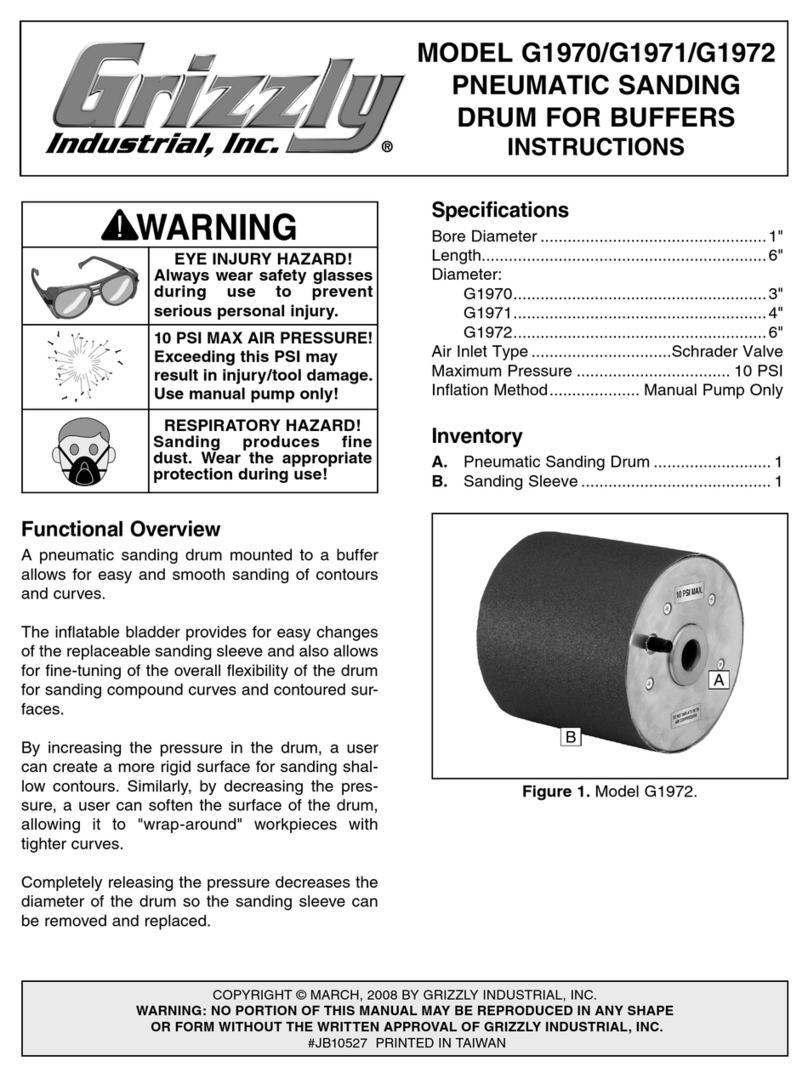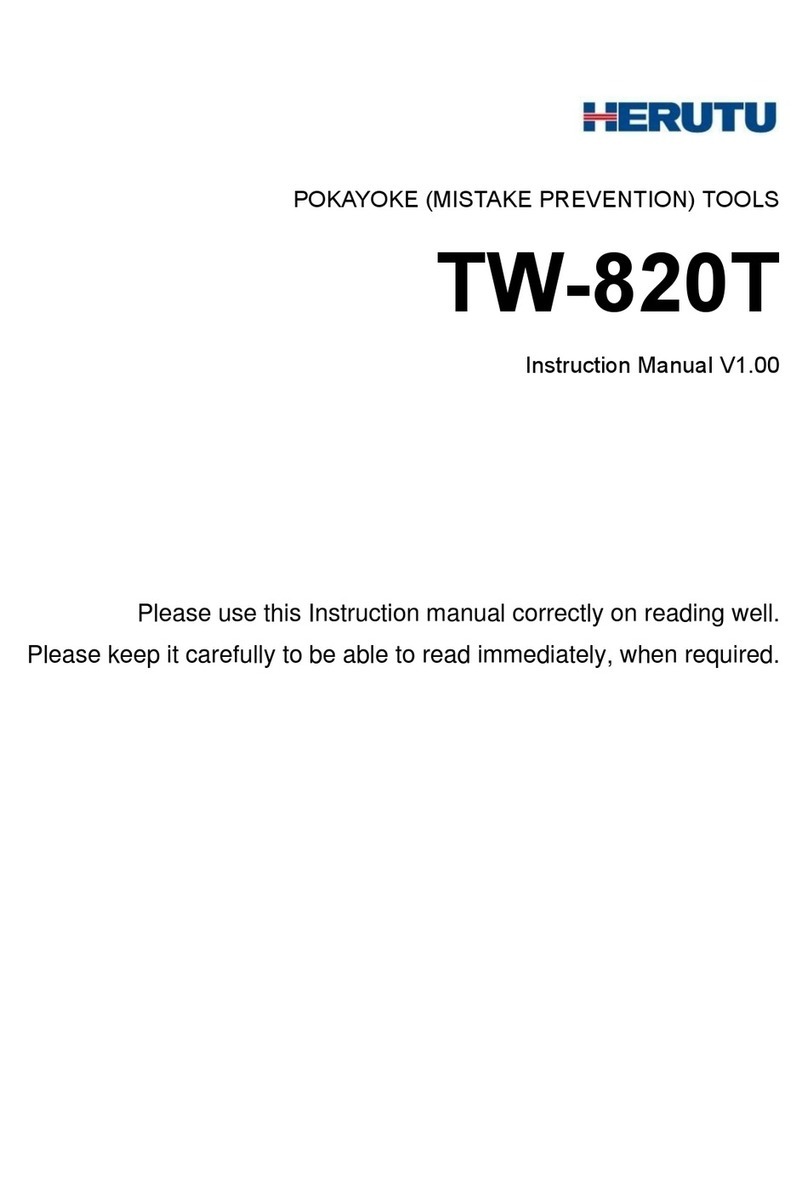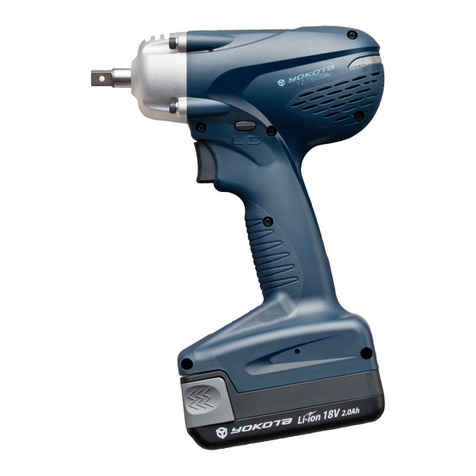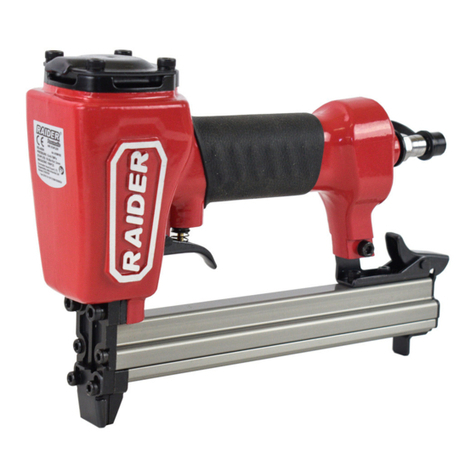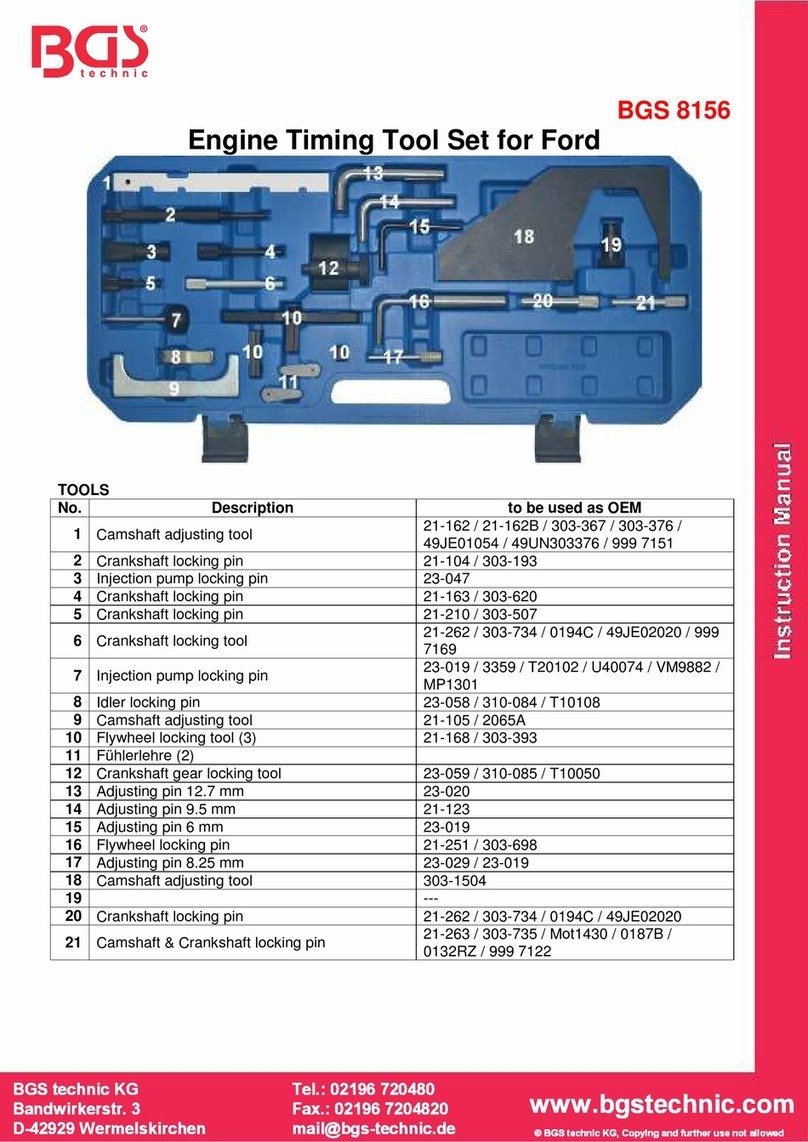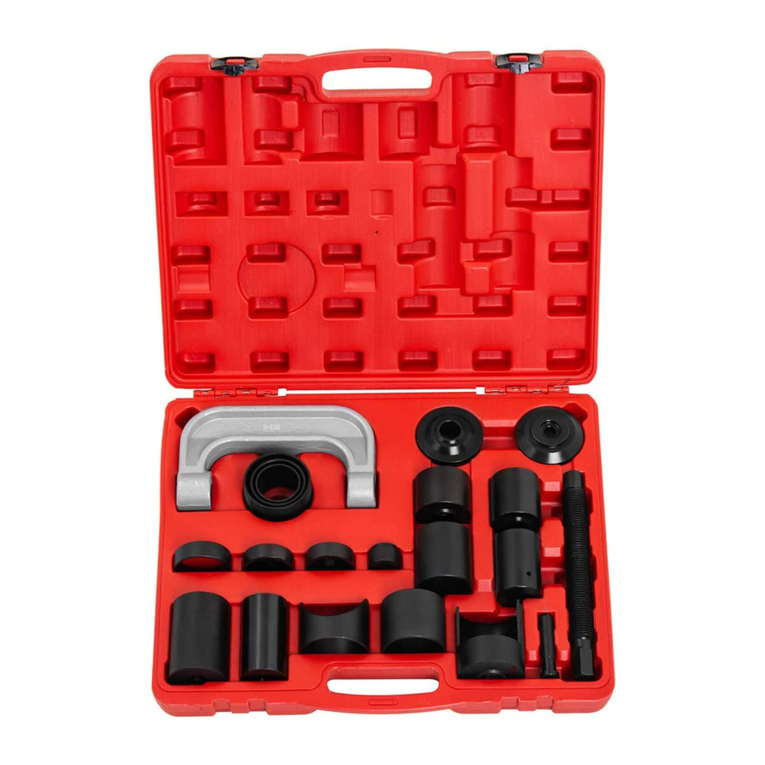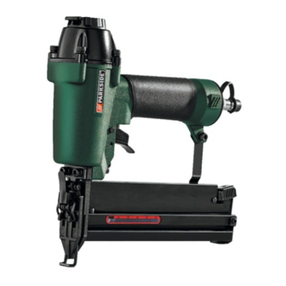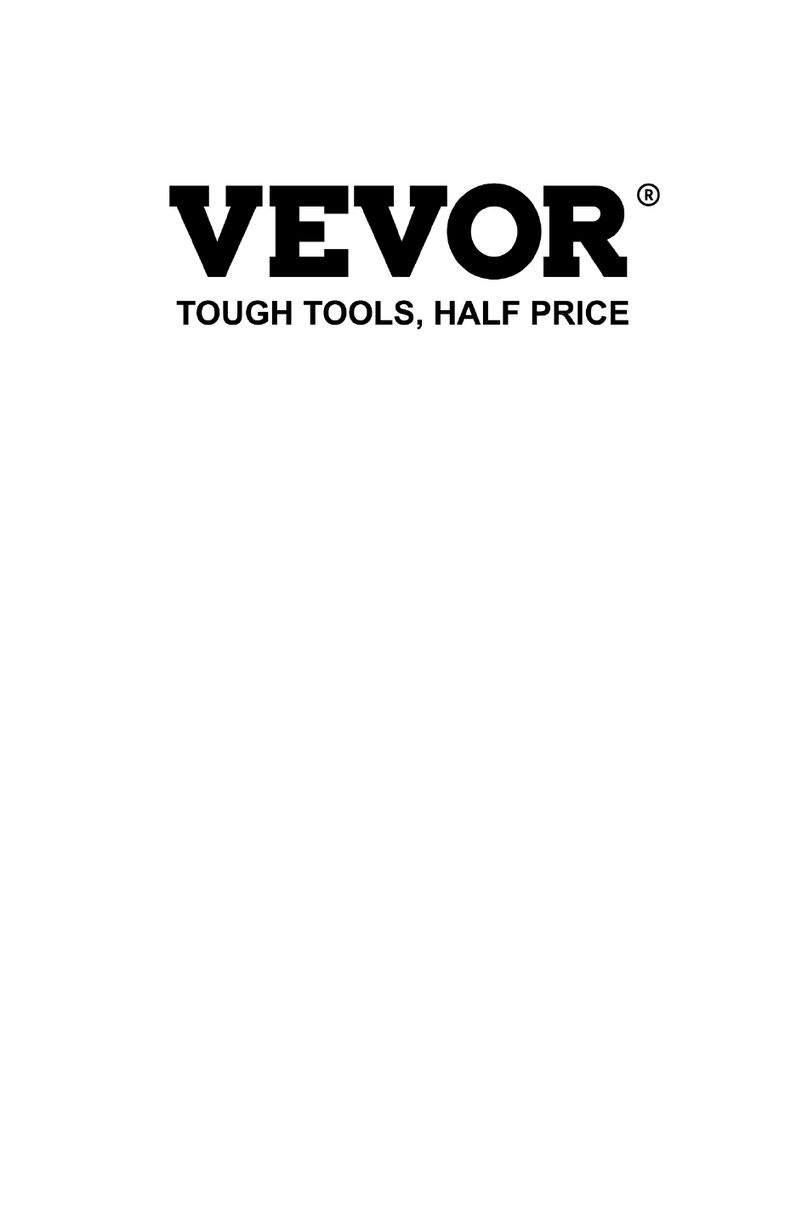Robert Sorby ProEdge User manual

THE ULTIMATE SHARPENING SYSTEM
INSTRUCTION MANUAL

The Robert Sorby ProEdge Sharpening System
Thank you for purchasing the Robert Sorby ProEdge sharpening system, it has been
designed using hundreds of years of tool manufacturing experience.
The simple set-up and operation of the ProEdge makes sharpening tools a pleasure and
gives the woodworker great satisfaction in achieving a perfect sharp edge every time.
EC DECLARATION OF CONFORMITY
Business Name & Address Of Responsible Person:
- Robert Sorby, Athol Road, Sheeld, S8 OPA England.
Capacity /Role of Responsible Person:
- Manufacturer
Description of Machine:
- ProEdge Sharpening System
Serial Number:
- Axed to machine and box lid
Relevant EC Directives & Regulations Complied with for Above Machine:
- Supply of Machinery (Safety) Regulations 1992 - Amended 1994: Machinery Directive 98/37 /EEC
Relevant EC Transposed Harmonised Standards
- BS.EN 1050; BS.EN 292; (ISO14121); BS.EN 953;
National Standards Used:
- BS.EN 5304 - Safety of Machinery
DECLARATION:
I certify that on completion of manufacture of the machine detailed above that a full conformity
assessment has been completed and relevant essential health & safety requirements complied with:
Name: Ian Finkill
Status within Company: General Manager
Signature:
2

3
WARNING
THESE INSTRUCTIONS MUST BE READ AND UNDERSTOOD
BEFORE OPERATING THE MACHINE
GROUNDING INSTRUCTIONS
All grounded, cord-connected tools:
In the event of a malfunction or breakdown, grounding provides a path of least resistance
for electric current to reduce the risk of electric shock. This tool is equipped with an electric
cord having an equipment grounding conductor and a grounding plug. The plug must
be plugged into matching outlet that is properly installed and grounded in accordance
with all local codes and ordinances. Do not modify the plug provided - if it will not t the
outlet, have the proper outlet installed by a qualied electrician. Improper connection of
the equipment-grounding conductor can result in a risk of electric shock. The conductor
with insulation having an outer surface that is green with or without yellow stripes is the
equipment-grounding conductor. If repair or replacement of the electric cord or plug is
necessary, do not connect the equipment grounding conductor to a live terminal.
Check with a qualied electrician or service personnel if the grounding instructions are not
completely understood, or if in doubt as to whether the tool is properly grounded.
Use only 3-wire extension cords that have 3-prong grounding plugs and 3-pole receptacles
that accept the tool’s plug. Repair or replace damaged or worn cord immediately.

4
WARNING
• RISKOFINJURYDUETOACCIDENTALSTARTING-Do not use in an area where children may
be present
• KEEPGUARDSINPLACEand in working order
•REMOVEADJUSTINGKEYSANDWRENCHES.Form habit of checking to see that keys and
wrenches are removed from tool before turning it on
• KEEPWORKAREACLEAN.Cluttered areas and benches invite accidents
• DON’TUSEINDANGEROUSENVIRONMENT.Don’t use power tools in damp or wet locations,
or expose them to rain. Keep work area well lit
• KEEPCHILDRENAWAY.All visitors should be kept a safe distance from work area
• MAKEWORKSHOPCHILDPROOFwith padlocks, master switches, or by removing starter
keys
• DON’TFORCETOOL.It will do the job better and safer at the rate for which it was designed
•USERIGHTTOOL.Don’t force tool or attachment to do a job for which it was not designed
• USEPROPEREXTENSIONCORD. Make sure your extension cord is in good condition. When
using an extension cord, be sure to use one heavy enough to carry the current your product
will draw. An undersized cord will cause a drop in line voltage resulting in loss of power and
overheating
*Table 1 shows the correct size to use depending on cord length and nameplate ampere rating. If in doubt,
use the next heavier gauge. The smaller the gauge number the heavier the cord.
WEARPROPERAPPAREL. Do not wear loose clothing, necktie’s, rings, bracelets, or other jewellery which
may get caught in moving parts. Non-slip footwear is recommended. Wear protective hair covering to
contain hair.
ALWAYSUSESAFETYGLASSES. Also use face or dust mask if cutting operation is dusty. Everyday
eyeglasses only have impact resistant lenses, they are NOT safety glasses.
Table 1 - Minimum gauge forcord
Amphere Rating
More Than Not More Than
Volts Total length of cord in feet
AWG
Not Recommended
120 V
240 V
25 ft.
50 ft.
50 ft.
100 ft.
100 ft.
200 ft.
150 ft.
300 ft.
0
6
10
12
6
10
12
16
18
18
16
14
16
16
16
12
16
14
14
14
12
12

5
WARNING
• SECUREWORK.Use clamps or a vice to hold work when practical. It’s safer than using
your hand and it frees both hands to operate tool
• DON’TOVERREACH.Keep proper footing and balance at all times
• MAINTAINTOOLSWITHCARE.Keep tools sharp and clean for best and safest
performance. Follow instructions for lubricating and changing accessories
• DISCONNECTTOOLSbefore servicing: when changing accessories and belts
• REDUCETHERISKOFUNINTENTIONALSTARTING.Make sure switch is in o
position before plugging in
• USERECOMMENDEDACCESSORIES.Consult the owner’s manual for recommended
accessories. The use of improper accessories may cause risk of injury to persons
• NEVERSTANDONTOOL.Serious injury could occur if tipped or if the cutting tool is
unintentionally contacted
• CHECKDAMAGEDPARTS.Before further use of the tool, a guard or other part that is
damaged should be carefully checked to determine that it will operate properly and
perform its intended function - check for alignment of moving parts, binding of moving
parts, breakage of parts, mounting, and any other conditions that may aect its
operation. A guard or other art that is damaged should be properly repaired or replaced
• DIRECTIONOFFEED.Feed work into a blade or cutter against the direction of rotation
of the blade or cutter only
• NEVERLEAVETOOLRUNNINGUNATTENDED.TURNPOWEROFF.Don’t leave tool
until it comes to a complete stop

6
RESIDUAL HAZARDS
1.Frictionandabrasionarisingfromcontactwiththebeltsurfaceatthepointwhereitis
exposedforuse.
Precaution - no further enclosure is deemed to be practicable and therefore the appropriate
guides should be used when completing the sharpening operation and, furthermore, care
should be exercised by adopting safe working practice.
2.Trappointin-betweenthebeltandpulley.
Precaution - x side guard in position on delivery. This must always be replaced prior to use
whenever belts are changed.
During the belt changing operation, the machine should be disconnected from the electrical
supply with full isolation being retained until the guard is axed.
The moulded plastic retaining nuts must always be replaced prior to usage.
3.Machinesmovingortopplingoverduringusage.
Precaution - secure the machine to the workbench utilising the four holes in the base plate.
4.Ejectionhazards.Smallparticlesmaybeejectedfromthebeltandthetoolduringthe
sharpeningoperationorintheunlikelyeventofthebeltbreakingduringusage.
Precaution - wear suitable approved eye protection during usage.
5.Entanglementwithbungandpolishingattachments.Precaution-removejewelleryand
watchesandavoidlooseclothing.
6.Inhalationofdustarisingfromtheabrasivecoatingonthebeltandthetoolbeingsharpened.
Precautions - the normal usage of the ProEdge is such that it is highly unlikely that the dust
hazard would become a health risk. Not withstanding this, repeated and consistent use may
lead to signicant volumes of dust arising and it is therefore recommended that for high levels
of usage, the machines should be connected to an appropriate local exhaust ventilation system
(LEV) via the port at the bottom of the existing enclosure guard. Should the machine not be
tted to LEV, an appropriate cover plate should be tted over the aperture. Suitable EC
approved (or equivalent) respiratory protection (dust mask) should be worn when grinding
tools.
7.Manualhandling-eachProEdgeweighsapproximately31lbs(14kg).
Precaution-Careshouldbeexercisedwhenlifting.

7
Angle setter
Angle selection pin
ASharpening belt
release lever
Belt tension spring
Belt tracking spindle
shaft and collar
B
Technical Details
Motor:1/2hpBeltWidth:2”BeltSpeed1400ft(440m)perminutetoachievethebestresultsfrom
yoursystem,pleasefamiliariseyourselfwithallofitspartsandaccessories.
Accessory
attachment hub
(Drive pulley)
Platform locking lever
On/O switch
Angle setter
information guide
Fingernail boss bar
Large tool platform
Jig location slot
Abrasive sharpening belt
Belt
assembly
swivel
screws
A
B
C
C

8
Accessories
A full list of all the accessories and sharpening belts is on the back page of this booklet. All the accessories
are available from Robert Sorby dealers. Those marked* are included in the ProEdge Plus.
Skew Chisel Jig*
Create the perfect bevel and
cutting edge on any skew chisel
Fingernail Prole Arm*
Maintain the desired ngernail
prole on any spindle & bowl
gouge from 1/4” (6mm) -
3/4” (19mm)
Honing Wheel & Arbor
Fixed to the accessory
attachment hub using the arbor.
The rubberised honing wheel can
be shaped to suit any tool
Cutter Holder
A multitude of cutters can be
sharpened by using this cutter
holder
Long Grind Jig
Allows 3 dierent types of prole
on bowl and spindle gouges-
ngernail, long and extra long
ProSet
Enables exact bevel angles
to be set
Standard Prole Gouge Jig*
Any standard prole gouge can
be sharpened quickly and easily
using this v-block skew chisel
Woodworking Chisel Jig
A simple way to achieve any
primary and secondary bevel
angles on all woodworking
chisels and plane irons
Short Tool Platform
This tool platform allows
tools with short blades to be
sharpened
Bung Mop & Pigtail Mandrel
Screwed onto the pigtail
mandrel, the loose leaf cotton
mop will produce a highly
polished nish on any tool when
used in conjunction with the
honing paste
Honing Paste
Used in conjunction with the
bung mop the honing paste
produces a very high polish on
any too
Knife Sharpening Jig
for sharpening carving, hunting,
pocket and kitchen knives
Full details of the sharpening
belts available on
page 12
Belts!

9
Preparingforuse
Sharpening Belt Alignment
Place the front edge of the base plate so that it is level with the leading edge of the worktop or
bench. Screw or bolt the base plate in this position.
Ensure the on/o switch is in the OFF position and plug into a standard electric wall socket. Check
the cable is in a safe position and that all moving parts of the machine are clear of any obstruction.
Switch on the power at the wall socket and switch the system on. Before operating the machine
please watch the belt to check for alignment, it has been pre-tracked in the factory but it may have
moved during transit.
Those marked* are included in the ProEdge Plus.
HowtoadjusttheBeltAlignment
While the system is running, place the two tracking adjustment bars into the holes in the spindle shaft
and the locking collar. Holdtheshaftstationaryandslackenthelockingcollar(anti-clockwise)
priortomovingthetrackingshaft. Small adjustments of the tracking shaft will move the belt to the
left and right on the pulley.
Please ensure the belt is tracked to the right hand edge of the backplate.

Tilting the Sharpening Belt Assembly
To assist in sharpening tools the ProEdge has a very useful feature in that the sharpening
belt assembly can be angled backwards to allow for a much more comfortable position when
sharpening at shallow angles.
- This is done by loosening the two screws by a quarter of a turn, next to the drive pulley and gently
moving the belt assembly to your desired angle
- When the belt assembly is tilted backwards the rear screw is accessed via the access slot in the
side guard as shown below
- When the desired angle is achieved, re-tighten the screws (nger tight) to secure the belt assembly
in place
Front screw
just below the
ngernail boss
bar - 1/4 of a
turn
Rear screw
- 1/4 of a turn
Access
slot
10

Using the Angle Setter
The unique Angle Setter allows the large tool platform to be set at any angle.
If a pre-set angle is required, for example 45
degrees (45˚), place the captive spanner over
the hexagonal locking bolt and loosen. Then
loosen the angle selection pin and move the
arm so that the selection pin locates into the
4th hole down from the top, as shown on the
Angle Setter guide
If a non pre-set angle is required, wind the
angle location pin back so that it is clear of the
location holes. Then position the tool platform
where it is required and tighten the locking
lever
The angle
selection pin in
the 4th hole from
the top, setting the
tool platform at
45 degrees (45˚)
The Angle Setter
with the angle
selection pin in the
top hole, which sets
the tool platform at
15 degrees (15˚)
11

12
Changing a Sharpening Belt
Firstly ensure the electric wall socket is switched o and remove the plug to ensure personal
safety.
Remove the two Robert Sorby t-bar screws from the belt assembly and remove the guard.
Lift the belt release lever and pull it towards the front of the system.
The belt is now free and can be removed by sliding it o the top and
bottom pulleys.
The new belt can now be tted by sliding it over the two pulleys at
the same time, ensuring it is lined up in the centre of both pulleys.
Lift the release lever to apply the tension on the belt and return it to
its original position at the rear of the system. Replace the side guard
and secure in place with the two t-bar screws.
Return the electric plug into the wall socket and switch on. Now switch on the ProEdge and check
for the belt alignment. If it is not correct, adjust as described on page 9.
Choosing the Correct Sharpening Belt
Abrasive belts cut cleaner and more eciently than a grinding wheel and will produce a much
cleaner cutting edge.
There are three options available to use with the ProEdge system.
1.AluminiumOxide60,120*&240*grit: Ideal for sharpening woodworking
chisels, carving tools and pirons.
2.Zirconium60*&120grit: Designed for HSS tools,drill and router bits.
3.Ceramic60&120grit:Very hard-wearing and long-lasting
suitable for heavy material removal.
4.Trizact600,1200,3000grit.Enables knives to be sharpened to a
razor edge of 2 microns - equivalent to a disposable razor blade.
5.Thediamondabrasivegrainachievesoutstandingresultson
tungsten carbide, ceramic, glass and natural stone as well as
manyotherresistantmaterials. Full details of accessory parts
and sharpening belts, please
see back page
Accessories!

13
UsingtheAccessories
The relevant jigs t into the slot of the tool platform. This allows the jig to slide from side to side
so that all of the sharpening belt can be utilised.
The accessories marked * are included in the ProEdge Plus.
Sharpening a Skew Chisel
The skew chisel needs to be extremely sharp to work correctly and safely,
using the skew jig* makes this achievable in seconds.
Tilt the belt assembly backwards as instructed on page 10.
Now set the angle setter (page 11) to the top hole (15 degrees) or the
desired angle and re-tighten using the locking lever.
The tool platform is now set to the desired angle and the
skew jig can be placed as shown.
Ensure there is nothing to obstruct the jig from sliding
sideways.
Switch on the ProEdge and ensure the belt is aligned
correctly. If it is not then refer to page 9 ‘Abrasive belt
alignment’.
If the belt is correctly aligned, place the skew onto the jig as shown and slowly push the skew chisel
forward so that it makes contact with the belt.
Hold the skew chisel against the jig to maintain the correct cutting angle and slowly slide the jig and
skew chisel side to side moving across the width of the belt.
When the rst side has
been sharpened turn the
skew over and place it
against the other side of
the jig and continue as
before, until the tool is
razor sharp.

14
SharpeningFingernailProleBowl&SpindleGouges
Sharpening a ngernail prole bowl or spindle gouge can be one of the most dicult jobs for
any woodturner.
The ngernail prole arm* will produce a ngernail prole on any spindle or bowl gouge from a
1/4” (6mm) to 3/4” (19mm) and it allows for any combination of bevel angle and wing sweep to be
readily achieved.
Slide the boss over the ngernail boss bar and place the arm into the
location hole. The arm is factory set at 120 degrees (120˚) to give a normal
ngernail prole.
To produce a ngernail prole, slide the gouge
into the clamp until the bevel is at against
the abrasive belt. Tighten the clamp screw to
hold the gouge in place and allow the gouge to
move away from the belt prior to switching on
the ProEdge.
If a dierent bevel angle is required it is just a matter of sliding the tool
further through the clamp and more material will be taken from the heel
of the tool making the bevel angle shallower. If a steeper bevel angle is
required then the tool needs to be drawn back in the clamp so that more
material is removed from the nose.
When the correct angle has been established, switch on the system and
move the gouge forward so that the right wing touches the abrasive belt.
With a small amount of pressure allow the gouge to roll with the arm to
produce the ngernail prole with a perfect cutting edge.
The sensibly priced ProSet enables exact
repeatability of angles. See page 19
Useful tip !
Using the LongGrindJig on the ngernail proler
allows for three dierent types of prole.
See page 18
Useful tip !

SharpeningStandardProleGouges
Used in conjunction with the very ne abrasive sharpening belts, the woodworking chisel jig
will give a perfect cutting edge on any woodworking chisel and plane iron.
The Angle Setter has all the recommended bevel angles, depending
on the wood being used, for woodworking chisels such as bevel edge,
paring and framing chisels .
Ensure that the desired sharpening belt is tted, the angle setter is set
to the required angle and tighten the
locking bolt. Check that the slot in
the tool rest is clean and place the key of the straight edge jig
into it. Switch on the ProEdge and carefully place the tool to be
sharpened against the guide bar of the jig.
15
SharpeningStandardProleGouges
Keeping a gouge in a consistent position whilst maintaining the required bevel angle takes
many hours of practice with a lot of frustration along the way.
The Standard Prole gouge jig* allows the gouge to sit in the same
position and allows it to roll in a constant axis giving a single faced
bevel. Set the angle setter to the required pre-set or preferred angle
and lock into place with the locking lever.
Sit the locating key of the block into the slot in the tool platform.
Switch on the ProEdge and gently place the gouge into the
v-shape of the block. Push the tool up against the abrasive belt
and slowly roll it from one side to the other.
Carefully push the tool forward until the bevel makes contact with
the sharpening belt. Hold the blade against the jig and slowly slide
it from side to side.

16
Sharpening Cutters & Tips
To sharpen a tool cutter is normally done using a diamond le or honing stone across the top
face. This is a simple and convenient way to maintain a good cutting edge while keeping the
cutter attached to its respective tool.
Using the ProEdge and the cutter holder, allows the cutter to be
sharpened, giving a consistent crisp edge whilst maintaining the
original shape of the cutter. It also can be used to re-prole cutters
and tips to a preferred shape.
Sharpening Cutters using the Cutter Holder
Lay the cutter to be sharpened at onto the top face of the holder or into the
clamp and secure in place with the screw. Set the angle location pin on the Angle
Setter to the desired position and tighten the tool platform locking lever. Slowly
push the cutting edge up to the belt and carefully follow the prole of the cutter
until the desired edge is achieved.
Using the Clamp
Place the cutter into the clamp and secure by tightening the screw. Set the Angle Selection pin into the
second from last hole at the bottom which will give 80 degrees (80˚) and tighten the platform locking
lever to secure. Switch on the ProEdge and lay the cutter holder at onto the platform and slowly push
the cutting edge up to the abrasive belt and carefully follow the prole of the cutter.
Sharpening Small & Short Bladed Tools with the Short Tool Platform
The Short Tool Platform allows for small tools like the micro range and short bladed tools such as
many of the carving tools to be sharpened on the ProEdge.
To use the Short Tool Platform the original Tool Platform must be removed by completely unscrewing
the locking lever and screw. Now place the locking lever and screw into the hole in the arm of the Short
Platform Tool and tighten to hold the platform in place. Also unscrew the locating pin from the original
arm and screw it into the hole in the Short Tool Platform arm to use the angle setter.
The Short Tool Platform can now be adjusted to the desired angle in the same way as the standard tool
platform.
At one end of the cutter holder there is a screw in a nger shape to allow dierent cutters to be held and
the nger shape allows for all round access. In the other end is a clamp to hold cutters from the Robert
Sorby Multi-tipped Hollowing tool (RS200KT) and the Hollowmaster(RS230KT).

17
HONING TOOLS
SAFETY - The abrasive belt should be removed before using the honing wheel to reduce the
number of moving parts. Ensure the electric wall socket is switched o to ensure personal safety.
Ideal for honing the utes of carving chisels and other gouges this rubberised abrasive wheel
can be shaped to suit the tool to be sharpened.
Fitting the arbour and wheel
Undo and remove the two t-bar screws and remove the side guard from the
belt assembly then remove the belt as described on page 12.
Place the arbour against the accessory hub and secure with the three screws.
Remove the nut, place the wheel over the arbour and replace the nut securing
the wheel up to the shoulder.
UsingtheHoningWheel
The outside face and the outer diameter of the wheel can be used to achieve
the high polish that is required. As the wheel is manufactured in a rubber
compound it is easy to shape the edge using a sharp tool or abrasive paper
such as the belts from the ProEdge. This is ideal for honing the utes of gouges.
When sharpening tools on the outside diameter ensure
that the cutting edge is facing away from the direction of
rotation so it is recommended that the tool is underneath
the wheel. When using the face of the wheel to at hone the bevel of any tool
always use the bottom portion to avoid the tool cutting edge digging into the
wheel.
PolishingToolsandWoodenProjects
SAFETY - The abrasive belt should be removed (see page 12) before using the bung mop to reduce
moving parts. Ensure the electric wall socket is switched o and the plug is removed to ensure
personal safety. Please remove the cotton bung mop when using the abrasive belt due to the
potential re risk from sparks.
Fitting the Pigtail Mandrel and Mop
Unscrew and remove the two t-bar screws and remove the side guard from the
belt assembly, then remove the belt as described on page 12. Place the mandrel
against the accessory hub and secure with the three screws. The mop has a
thick leather washer on one side and a bre washer on the other holding the
loose leaves together.
Screw the leather washer side onto the mandrel to ensure a good tight t.

18
FittingthePigtailMandrel&Mop(continued)
The blue honing paste contains a variety of materials within it and is specically designed to give
a highly polished cutting edge to carbon and High Speed Steel tools. When applying the honing or
other polishing compound and also when using the mop, always use the bottom portion of it, so
that the direction of rotation is away from you.
Apply the bung paste little and often.
Replace the electric plug into the wall socket,
switch on the power and switch on the ProEdge.
Apply a small amount of honing paste to the mop as mentioned above, now
the tool or project can be polished. Maintaining a good hold of the tool,
apply a light pressure onto the mop with the tool, so that the mop does not
displace too much and gently move around the mop to ensure the desired eect.
TheRobertSorbyKnifeSharpeningJig
The Robert Sorby Knife Sharpening Jig will enable the sharpening of carving, hunting, pocket
and everyday kitchen knives.
There are two models available each consisting of a new back
plate with a raised wear plattern attached, a universal arm and a
choice of either a small or a large knife holder. The small one will
hold knives upto 8” and the large will hold blades over 8”. A set
of instructions is also included. The jig can be easily tted to the
ProEdge in a matter of minutes and the only equipment needed is
a 13mm wrench.
The versatility of the two dierent knife holders means that any
type of knife can be brought back into life quickly and easily using
this system.
Once the blade is clamped into the holder the knife is gently drawn across the surface of the
abrasive belt following the desired bevel angle.
The knife holders are interchangeable and are available individually.
Using the long grind jig on the ngernail proler allows for three dierent
types of prole to be produced on bowl and spindle gouges. It will produce
a ngernail prole, a long grind and an extra long grind depending on
which location hole the proling arm is placed in. It replaces the standard
boss which is supplied with the ProEdge.

19
WoodturningToolBevel&ClearanceAngles
The diagrams on this page show details of the angles and proles supplied on Robert Sorby
tools. The images are broken into four sections from left to right.
1.Ageneralview
2.Anendviewshowingtheactualcuttingedgeprole
3.Atopviewshowingtheshapeofthecuttingedgeasseenwhenusingthetool,togetherwithanyrelevant
proleangle
4.Asideviewwiththerecommendedbevelorclearanceangledependingonthetypeoftoolbeingsharpened.
WoodworkingChisel&PlaneIronBevelAngles
The diagrams below show all the views as described above but with the addition of the two
showing the primary and secondary bevel angles depending on the type of wood to be worked.
Please refer to the angle setter information guide on the front of the system for more recommended bevel angles.
Achieving the exact bevel angle on any ngernail or long grind gouge has
never been easier than with the ProSet.
By placing the gouge into the clamp of the prole arm and then extending
the gouge upto the required stop and locking it into place the turner will
be able to obtain precise and repeatable bevel angles.

Parts List
The ProEdge is just one of many innovative ideas from Robert Sorby.
For all the latest tools and products as well as a large selection of useful and informative video clips
and information on demonstrations, log on to our website:
www.robert-sorby.co.uk
For more details on additional accessories as well as replacement and additional sharpening belts, contact your local stockist or Robert Sorby.
RobertSorbyLtd,AtholRoad,Sheeld,S80PA,England.
Tel:+44(0)1142250700Fax:+44(0)1142250710
Email:sales@robert-sorby.co.uk
RegisteredinEngland:CompanyNo3464018,Registeredoce:AtlasWay,AtlasNorth,Sheeld,S47QQVATNo.GB172401984
Allsizesanddimensionsstatedarenominal.Itisourpolicytocontinuouslyimproveproductsandhencewereservetheright
tochangedesignswithoutpriornotice.E&OE
Jigs&Accessories
Description
Skew Jig
Fingernail Proler
Standard Gouge Jig
Woodworking Chisel Jig
Woodworkers Square Guide
Pigtail Madrel
Bung Mop
Wheel Arbor
Honing Wheel
Cutter Holder
Honing Paste
Short Tool Platform
Knife Sharpening Jig - Small
Knife Sharpening Jig - Large
Knife Holder - Small
Knife Holder - Large
Long Grind Jig
ProSet
Product Code
PESKEW
446/447UPG
PEVB
PESQ
PESQW
PEPIG
PEMOP
PEARBOR
PEBOND
472
475
PESPC
PEKJIGS
PEKJIGL
PEKHS
PEKHL
PELGJ
PROSET
Sharpening Belts
Description
Aluminium Oxide
Aluminium Oxide
Aluminium Oxide
Zirconium
Zirconium
Ceramic
Ceramic
Trizact
Trizact
Trizact
Diamond
Grit
60
120
240
60
120
60
120
600
1200
3000
200
Product Code
PE60A
PE120A
PE240A
PE60Z
PE120Z
PE60C
PE120C
PE600T
PE1200T
PE3000T
PEDIA
PatentNo.2438962
PROUDLYMADE IN
SHEFFIELD, ENGLAND
This manual suits for next models
20
Table of contents
Other Robert Sorby Tools manuals
